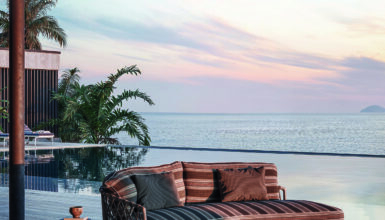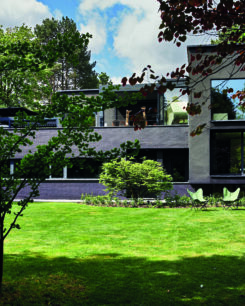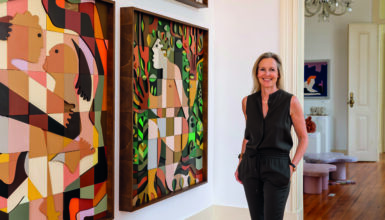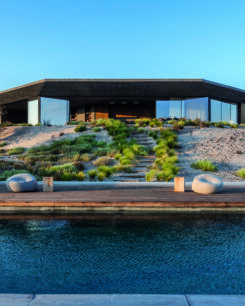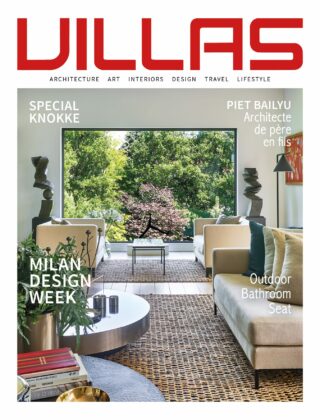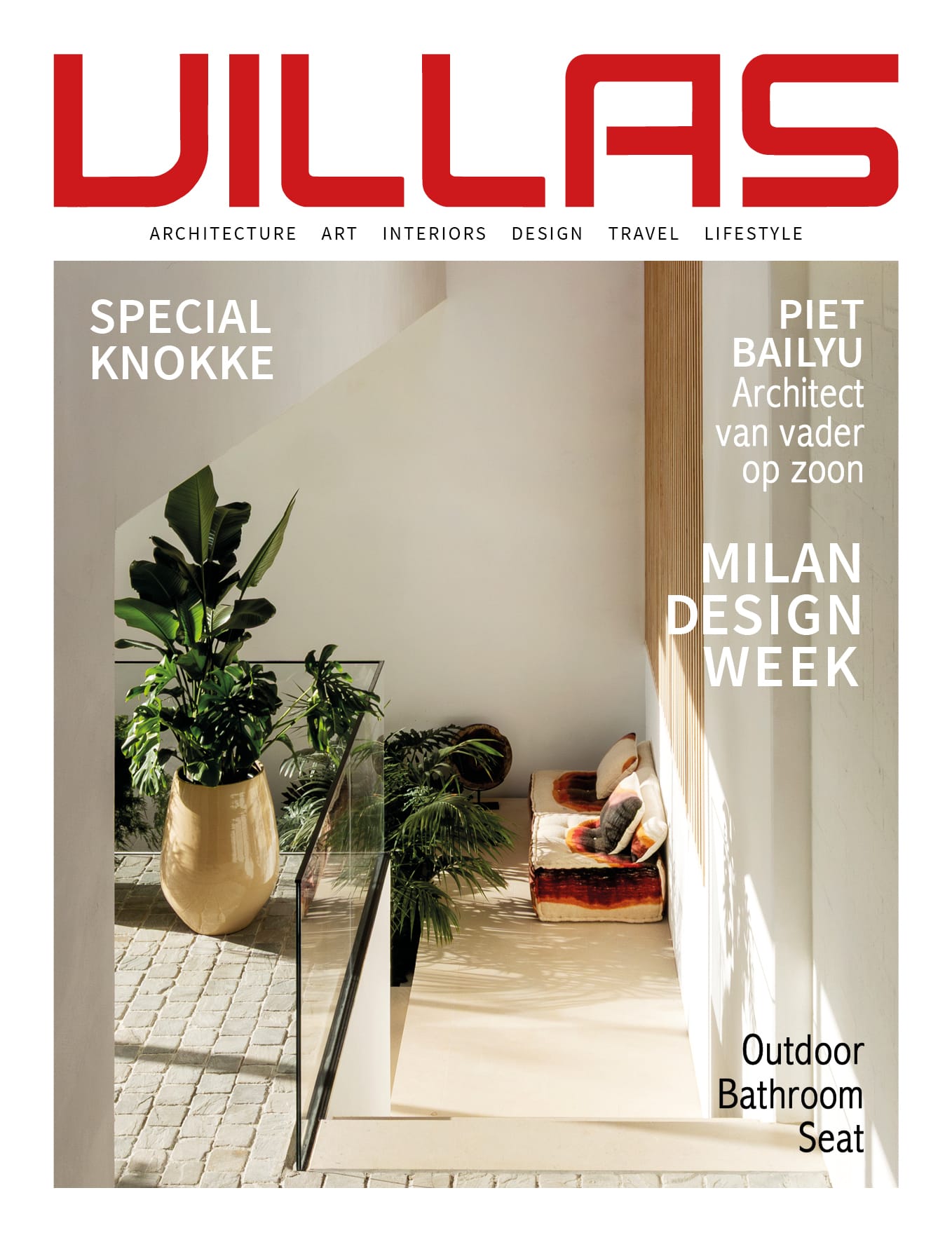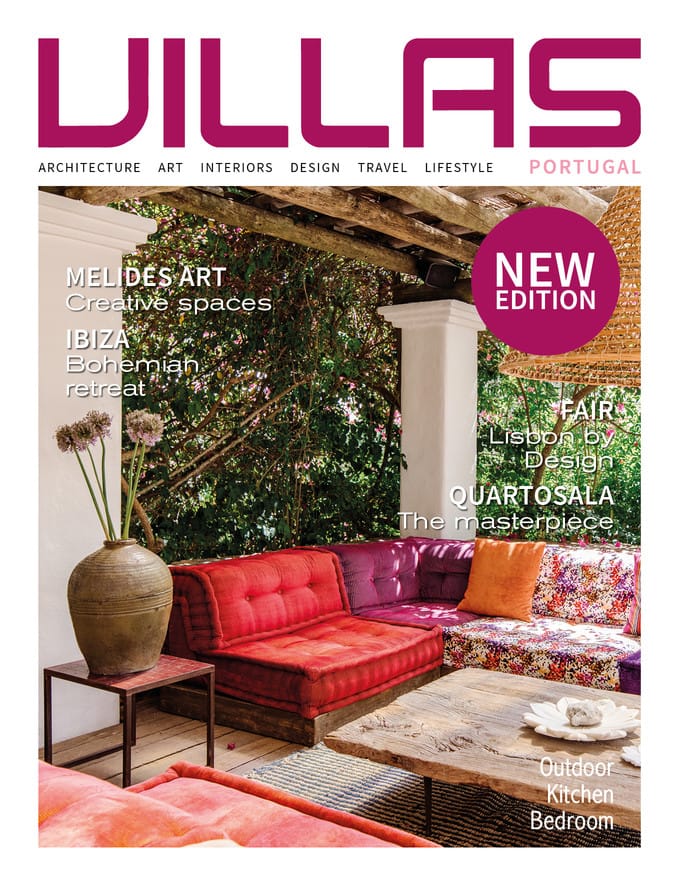Sommaire
A new architectural feat in the middle of the desert
Monumental and innovative creations by Jean Nouvel
The unique experience offered by Jean Nouvel and his architectural firm with the National Museum of Qatar (NMoQ) marks a new stage in the wide range of projects carried out by this holder of the Pritzker Prize, the highest award in architecture in the world. The establishment of his work in the changing architectural landscape of Doha has also led to comparisons with another project in Qatar: that of the Dutch architect Rem Koolhaas, a famous recipient of the same architecture prize. OMA, the latter’s agency, is the creator of the National Library of Qatar: a prominent, triangular building with a futuristic strangeness that can leave you feeling indifferent. For the Frenchman Jean Nouvel, architecture should instead be a form of beauty comparable to art. The National Museum of Qatar is a perfect example of this.
In Paris, Jean Nouvel has created numerous monuments and especially cultural institutions for the ancient, modern and contemporary arts: from crafts to music to the visual arts. These have been erected since the late 1980s. The French capital has the Institut du monde arabe (1987), the Fondation Cartier pour l’art contemporain (1994), the Musée du Quai Branly (2006) and the Philharmonie de Paris (2015).
Skyscrapers for multinational companies, financial centres in international cities such as Tokyo (Dentsu Towers) and Barcelona (Torre Agbar) and administrative buildings with massive horizontal structures, such as in the French cities of Nantes (Palais de Justice) or Montpellier (Hôtel de Ville), have so far characterised the “Jean Nouvel spirit”.

Iwan Baan | NMoQ
A unique and environmental approach
What is Jean Nouvel’s architectural style? Certainly a mixture of a penchant for structures like monoliths, sometimes ovals, black, deep red. And full transparency on all floors with an airy spirit that animates the glass, steel and raw concrete, along with playing with openings and light in several places. Also, rectangular shapes that inspire stability. Architecture that is oriented to best account for the surrounding landscape and minimise the natural heating of the building or limit its energy consumption.
The establishment of an extension of the Louvre Museum in the United Arab Emirates, requested by the French government, brought forth the Louvre Abu Dhabi in 2017, the first ever global museum in the Arab world. Nearly a thousand works from all periods and civilizations, from the origins of the world to contemporary art, are housed here. Jean Nouvel’s ambitious and well thought-out concept has proved its worth: the architecture of this place is based on the principle of the traditional Arabian dome, in this case entirely covered with holes (inspired by the so-called “mashrabiya” partition). The light bathes the immense spaces of the museum. A microclimate has been created and even rainwater is saved.
Inaugurated two years later, in 2019, the National Museum of Qatar emerges “from a desert that has ventured into the sea” according to the French architect. The structure extends 350 metres along the great bay of Doha and takes the form of a desert rose. This type of rock is formed by the natural phenomenon of crystallisation of minerals at the top of the water table, near the surface of the ground. The National Museum of Qatar therefore seems to spring from the earth and merge with it.
Landscape meets history
A desert rose that enhances Doha
The intertwined discs that make up this iconic building represent windswept and sculpted rock. Their shapes also evoke the culture and climate of Qatar. The sand-coloured concrete cladding is in keeping with the local environment and shadows are created by overhanging elements. These allow you to walk outside and protect you from light and heat inside. There are only a few recessed windows, and the sun never reaches them. Within the building, the spaces generated by these architectural discs intersect. This construction makes use of a multitude of spaces with graphic and geometric volumes. Therefore, when the visitor passes through one space, they cannot guess the architecture of the next. This helps to create a surprising dynamic of discovery.
The royal destiny of the National Museum of Qatar
The museum was built around a historic building that once housed the local heritage museum and was once the residence of the royal family: the palace of Sheikh Abdullah bin Jassim Al Thani (1880-1957), son of the founder of Qatar. The visit follows an elliptical route around a central courtyard with slight slopes, echoing the natural undulations of the dunes. The permanent collections, devoted to the geological, cultural and political history of Qatar, are shown here. The highlight is the discovery of the Old Palace, one of the jewels of the NMoQ’s collections, here restored to its original state.

Iwan Baan | NMoQ
See one of Qatar’s best attractions
Unique collections and historical masterpieces
Jean Nouvel’s National Museum of Qatar is organised into three sections consisting of eleven galleries. 7,000 m2 are dedicated to the permanent collections and 1,700 m2 to temporary exhibitions. Each gallery tells a part of Qatar’s history through a combination of sound, archive images and heritage objects. You can see the famous pearl carpet ordered by the maharaja of Naroda in 1865 and decorated with one and a half million pearls from the Persian Gulf (diamonds, emeralds, sapphires…). An unprecedented object, acquired at an auction at Sotheby’s, is accompanied here by photographs, jewellery and traditional costumes, among many other artefacts.
A contemporary museum and oasis of sculptures
The NMoQ once again marks the small state of Qatar as a central destination for art in the Middle East. A “giant” in the art world and market, following the country’s remarkable acquisitions of monumental sculptures by the land art artist Richard Serra and a painting by Paul Cézanne, for several hundred million dollars.
A range of modern and contemporary art further illuminates the rich collections of the National Museum of Qatar. Although its selection is mainly oriented towards creations from the Arab world and commissions from Qatari artists, the selection presided over by the Princess of Qatar Sheikha Al Mayasaa, sister of the current Emir and President of the museums of Qatar, displays international references that are highly appreciated by collectors, such as Damien Hirst, Mark Rothko and the unmissable Andy Warhol.
The full museum experience offered by the National Museum of Qatar as designed by Jean Nouvel is complemented by a landscaped park that reinterprets the region’s desert panoramas, with alternating small dunes, gardens inspired by flat plains, salt flats, lakes (“sabkhas”) and oases. This area is home only to plants, local species… and a 900-metre long lagoon with more than a hundred fountains designed by the French artist Jean-Michel Othoniel. Their almost impressionistic lines seem to be inherited from Arabic calligraphy. So many points of interest in an extraordinary visit.

Iwan Baan | NMoQ
Stunning but also green and sustainable
The tour of the collections and gardens of Jean Nouvel’s National Museum of Qatar ends with a striking note in the museum shop. Much more than just an art and bookshop, this is a real achievement by the Australian-Japanese firm Koichi Takada Architects. Architects renowned for their “vertical forest” projects. Constructed entirely of wood gathered from sustainable forests in Europe, the design of this unique venue, which is reminiscent of the ancient Qatari cave Dhal Al Misfir, is as impressive as the National Museum of Qatar.
Although located in the middle of the desert, the National Museum of Qatar is the first national museum to be awarded the green LEED certification, the standardisation system for buildings of high environmental quality, as well as four stars from Green Star. This rating system defined by the Green Building Council of Australia verifies that a building is truly sustainable.
Museum Park St, Doha, Qatar (United Arab Emirates)
